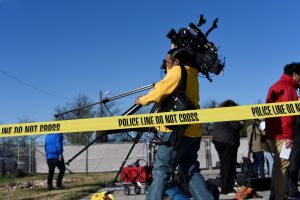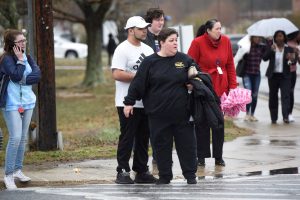
By Jon Herskovitz
PFLUGERVILLE, Texas (Reuters) – An unemployed 23-year-old man suspected of a three-week bombing campaign in Texas that killed two people and injured five others before blowing himself up on the side of a highway was identified by local media on Wednesday.
The suspect was identified as Mark Anthony Conditt, of Pflugerville, Texas, according to the local CBS television affiliate and Austin American-Statesman newspaper, citing unnamed law enforcement sources. Reuters could not immediately confirm the suspect’s identity.
Public records showed Conditt’s age as 23. Officials had said the suspect was 24.
Police tracked the suspect to a hotel about 20 miles north of Austin, the state capital, and were following his vehicle when he pulled to the side of the road and detonated a device, killing himself, Austin Police Chief Brian Manley told reporters near the scene.
“The suspect is deceased and has significant injuries from a blast that occurred from detonating a bomb inside his vehicle,” Manley told reporters. He declined to further identify the suspect, except to say he was white.
Investigators had tracked him for a couple of days before closing in at an unidentified hotel in Round Rock, Texas, not for from his home in Pflugerville, Governor Greg Abbott told Fox News on Wednesday.
“We’ve known for a couple of days who the suspect likely was,” Abbott said. “Law enforcement is at his house in Pflugerville where we are learning whether or not that was the location he was making his bombs.”
The governor added that the suspect is believed to have lived with two roommates, who are not currently considered suspects, Abbott said. The suspect was not a military veteran, Abbott said.
Texas law enforcement officials blocked off the street where the suspect lived, not far from where the first bomb went off on March 2, killing one person.
Jay Schulze, a 42-year-old network engineer, said on Wednesday he lived a few houses away from the bombing suspect and that the suspect and his friends would hang out late at night.
“They would be out in back playing music and partying pretty late,” Schulze said.
While jogging on Tuesday night, Schulze noticed a heavy police presence in the area, with drones flying overhead. He said he was stopped briefly by a person who he thought was an FBI agent.
‘DO NOT UNDERSTAND’ MOTIVATION
Manley said the suspect was believed to be responsible for six bombs around Austin, all but one of which detonated. He said the motivation for the bombings or whether the suspect had help was not yet known.
Manley warned residents to be cautious since it was not clear whether any more bombs had been left around the city.
The bombings killed two people and injured at least five others, unnerving residents of Austin, a city of some 1 million people. The first bombings occurred as the city was hosting the annual South By Southwest music, film and technology festival.
While officers waited for reinforcements before they arrested him, the suspect left the hotel and police followed.
The suspect pulled off the city’s main highway and two Austin police officers approached his vehicle when he set off the device. One officer fired at the vehicle and the other sustained a minor injury when the bomb went off, Manley said.
U.S. President Donald Trump congratulated authorities on Twitter: “Great job by law enforcement and all concerned!”
The first three devices were parcel bombs dropped off in front of homes in the Austin area. A fourth went off on Sunday night, apparently detonated with a trip wire also around Austin, and a fifth exploded inside a FedEx Corp <FDX.N> facility near San Antonio on Tuesday.
The bombings bewildered authorities, who by Sunday had publicly called on the bomber to contact them and explain why he was carrying out the attacks.
The first two bombs killed black men, raising fears that they were part of a hate crime, but investigators said the blasts that came later and were more random made that less likely.
Manley said investigators have no clear idea of what prompted the suspect to carry out the bombing, saying, “We do not understand what motivated him to do what he did.”
(Reporting by Jonathan Herskovitz; Additional reporting by Brendan O’Brien in Milwaukee and Jonathan Allen and Gina Cherelus in New York; Writing by Scott Malone; Editing by Larry King and Jeffrey Benkoe)










